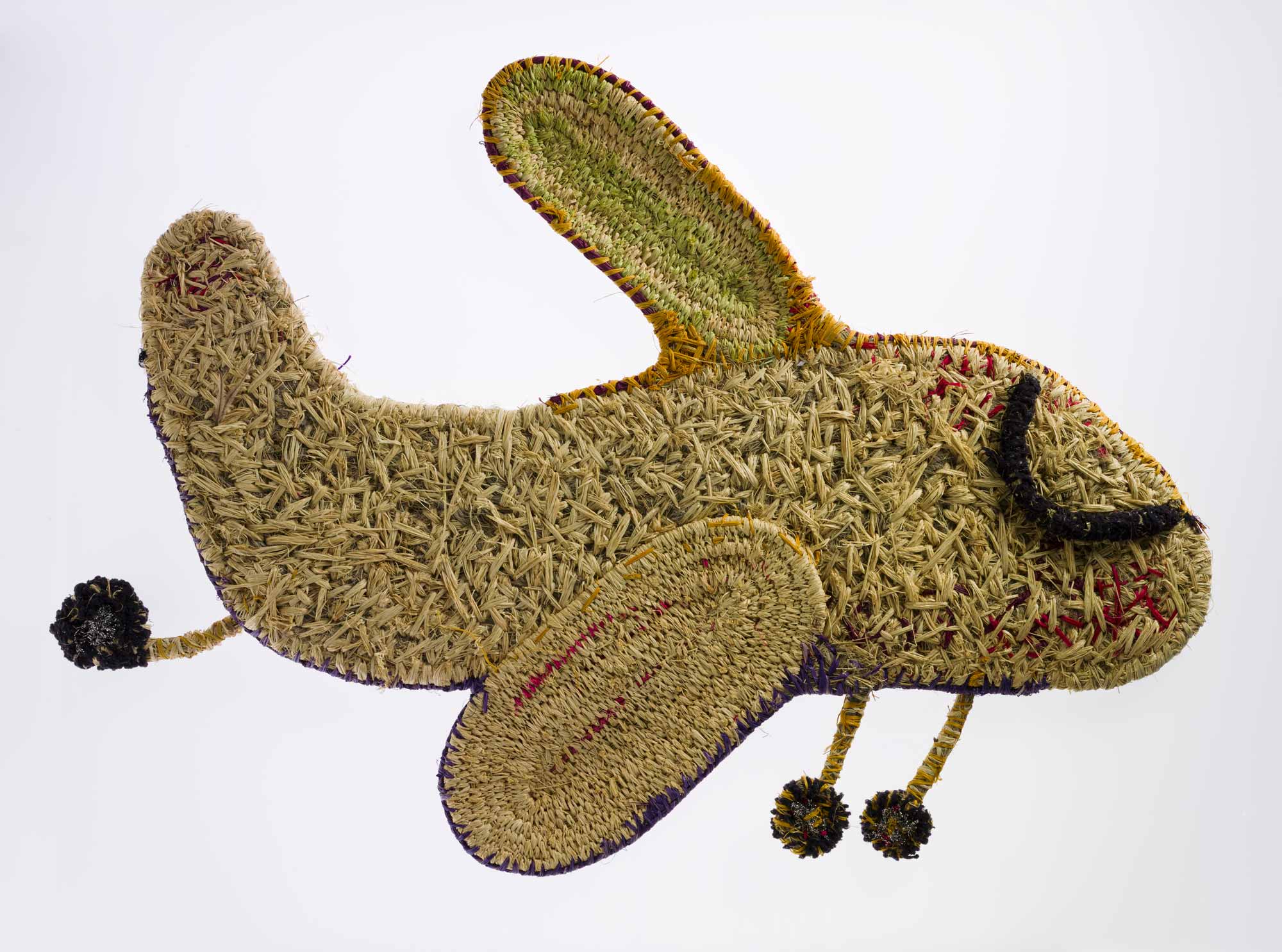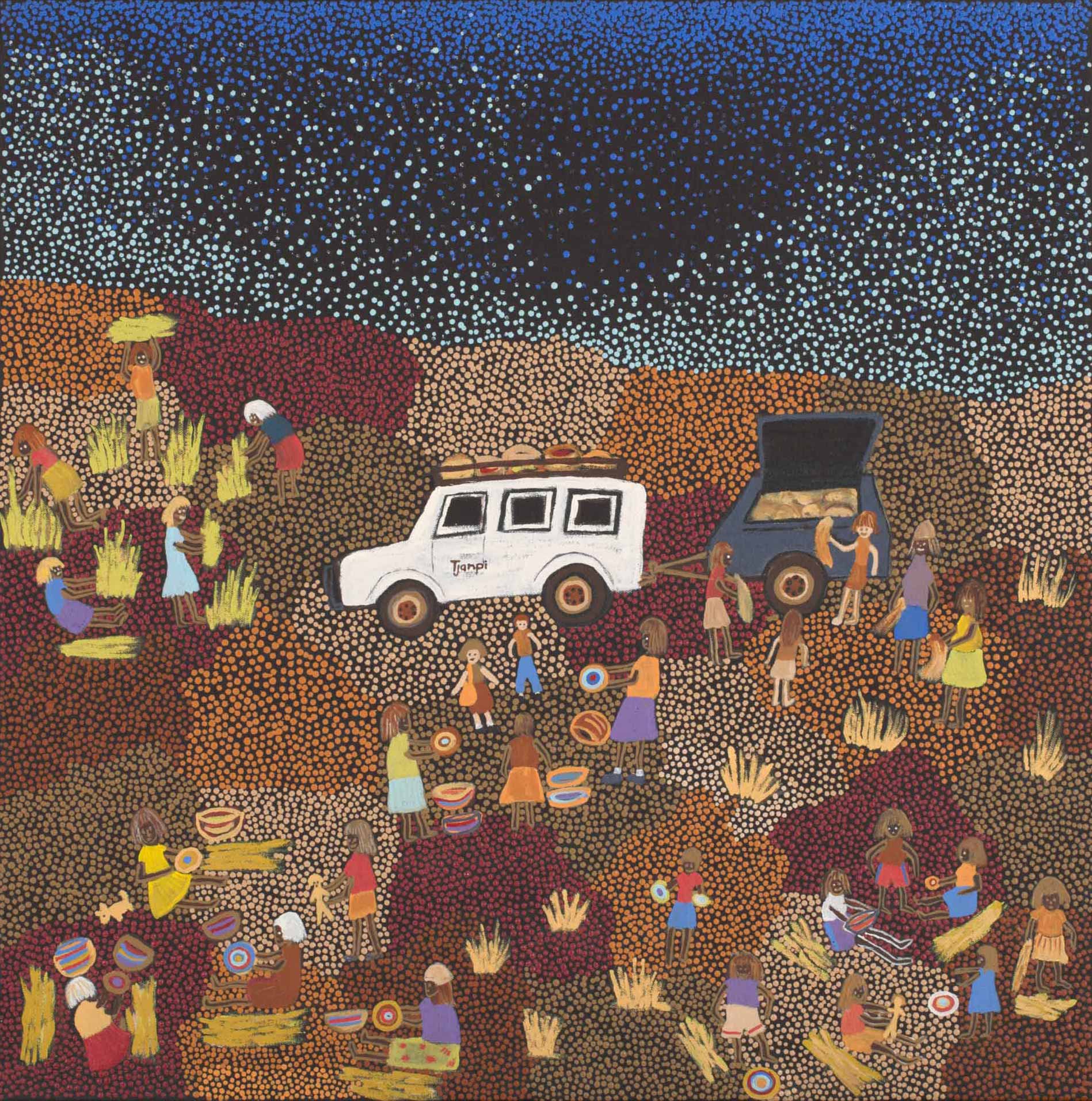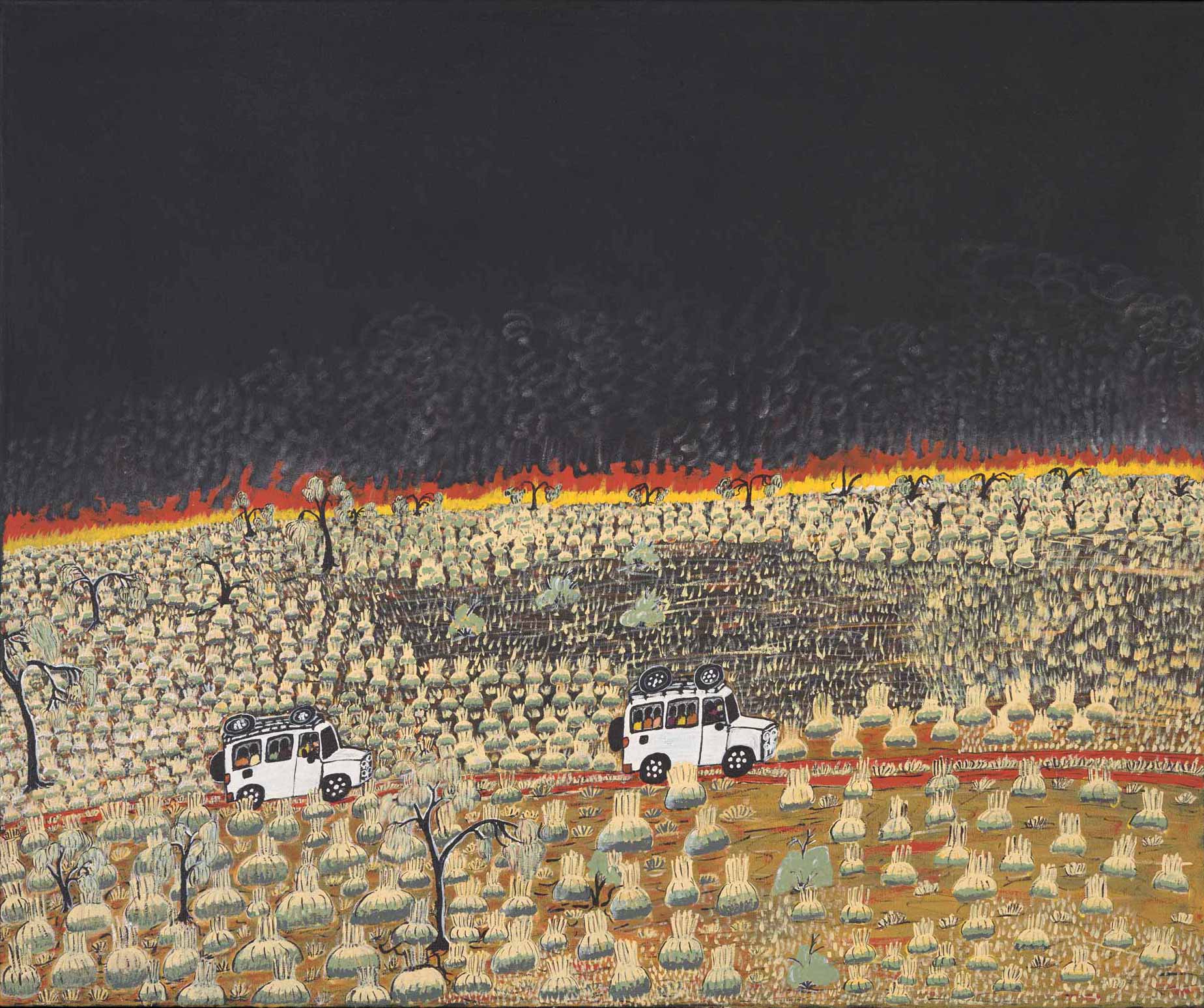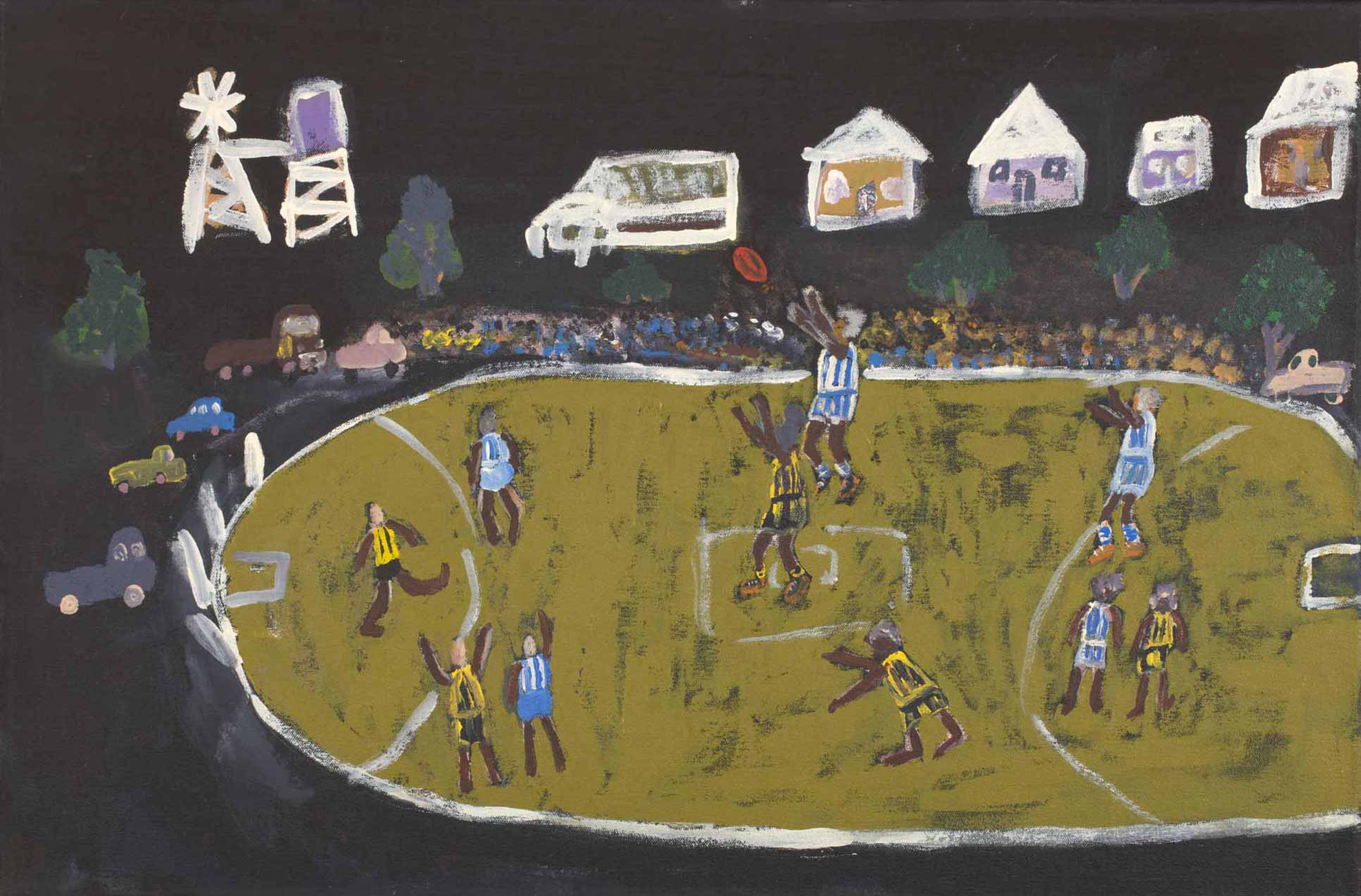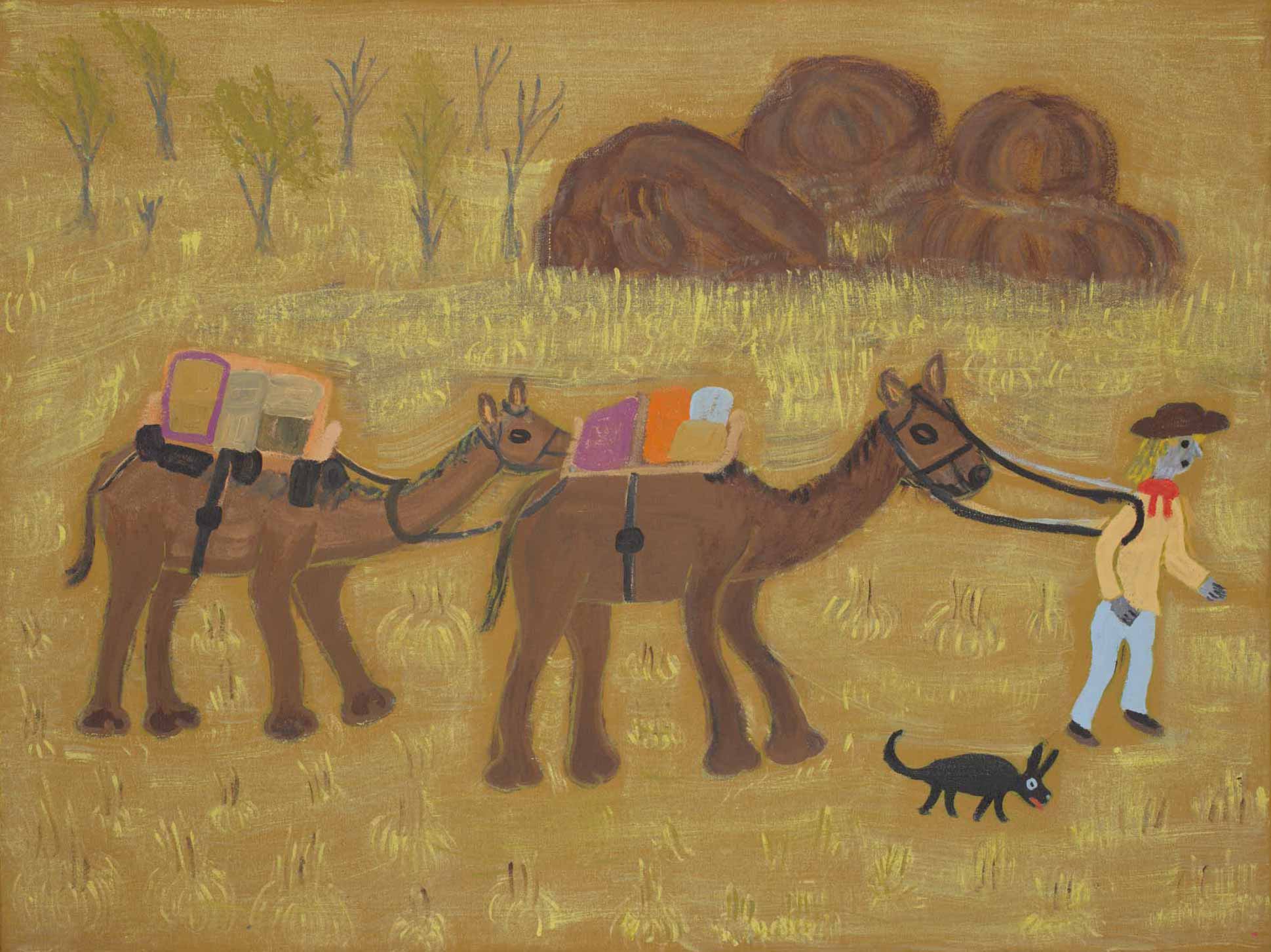
‘Camel Lady’, or Robyn Davidson, is an Australian woman who travelled across the Australian desert with four camels and a dog in the 1970s. The artist Jean Inyalanka Burke has illustrated Camel Lady during her journey.
Burke’s father, Mr Eddie, helped Davidson navigate country between Wingellina and Warburton and led her to water. Mr Eddie appears in Davidson’s book Tracks, which is about that journey.
Davidson was respected by Aboriginal communities. She had a reputation for wanting to learn from Aboriginal people, rather than just learn about them.
 Questions
Questions
Why do you think Davidson used camels?
What types of things do you think the First Nations people taught her?
If you did a trek like Davidson, what would you take with you and why?
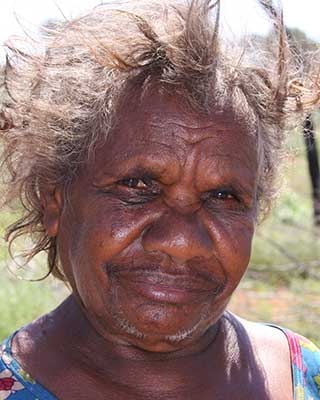
Jean Inyalanka Burke
1945–2012
Jean Inyalanka Burke was a multi-talented artist and storyteller, who had a major influence on the dynamic art scene at Warakurna with her acclaimed three-dimensional works in purnu (wood) and tjanpi (woven fibre). Her paintings built upon this background and extended her storytelling prowess.
Burke was born at a waterhole site known as Arnumarapirti, near Irrunytju (Wingellina). As a child she moved to the mission settlement of Ernabella, in South Australia, with her family.
When her mother died, Burke and her father, Mr Eddie, walked westward to Mount Margaret mission and then to Warburton Mission, where she attended school. Warakurna was Burke's husband’s country.








